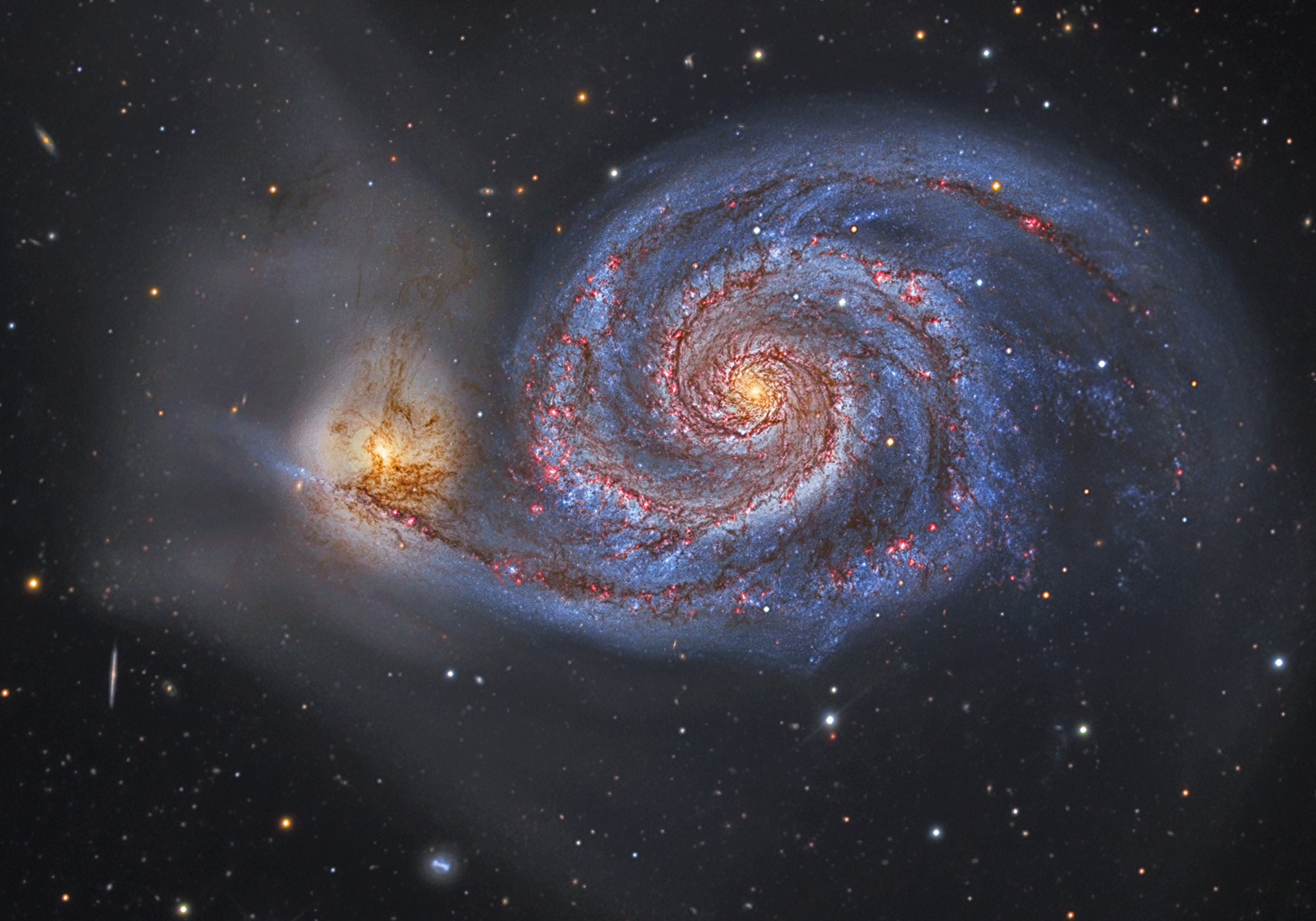
The Whirlpool Galaxy (M51) is one of the gems of the springtime evening sky — a bright, gorgeous face-on spiral galaxy some 27 million light-years away in Canes Venatici. With an 8-inch telescope under a dark sky, you can begin to see the spiral structure of its star-forming arms; larger scopes will make the arms more obvious.
Due to those attributes, M51 is also an important object in the history of astronomy. When Irish astronomer William Parsons, Earl of Rosse, turned his 72-inch telescope (nicknamed the Leviathan of Parsonstown) on M51 in 1845, he became the first person to notice the galaxy’s spiral structure. He called M51 a “spiral nebula,” the first known object of its kind.
For decades, astronomers debated the nature of these spiral nebulae. Some thought they were clouds of gas within our own Milky Way Galaxy — perhaps new solar systems in the process of formation. Others thought they were entirely new “island universes” unto themselves. It wasn’t until 1923 when observations of variable stars in the Andromeda Galaxy (M31) by Edwin Hubble showed that spiral nebulae lay far beyond the Milky Way, and must be separate galaxies in their own right.
Follow Astronomy magazine, the world’s best-selling astronomy magazine:
🌎 Website: https://astronomy.com
📖 Subscribe: http://subscribe.astronomy.com
📘 Facebook: https://www.facebook.com/AstronomyMagazine
📸 Instagram: https://instagram.com/astronomy.magazine
🐦 X/Twitter: https://twitter.com/AstronomyMag
Shop Celestron telescopes:
🔭 Website: https://celestron.com
Follow Dave Eicher:
📘 Facebook: https://www.facebook.com/davidjohneicher
📸 Instagram: https://instagram.com/eicher.david
🐦 X/Twitter: https://twitter.com/deicherstar









